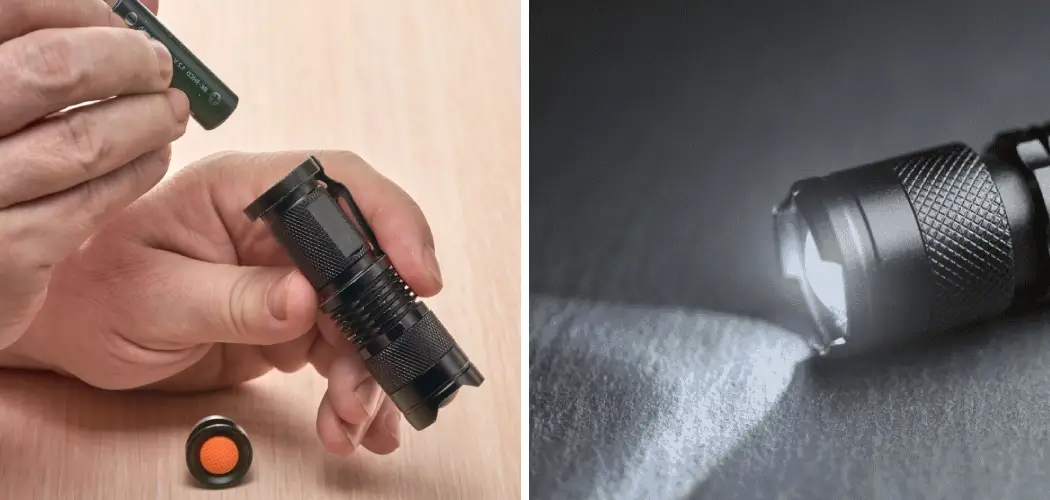It’s a nightmare scenario: you’re in the middle of a dark and stormy night, fumbling with your flashlight to lighten up the darkness. Suddenly your beam starts flickering, plunging everything into pitch blackness. You panic as you realize that your only source of light is diminishing off and on.
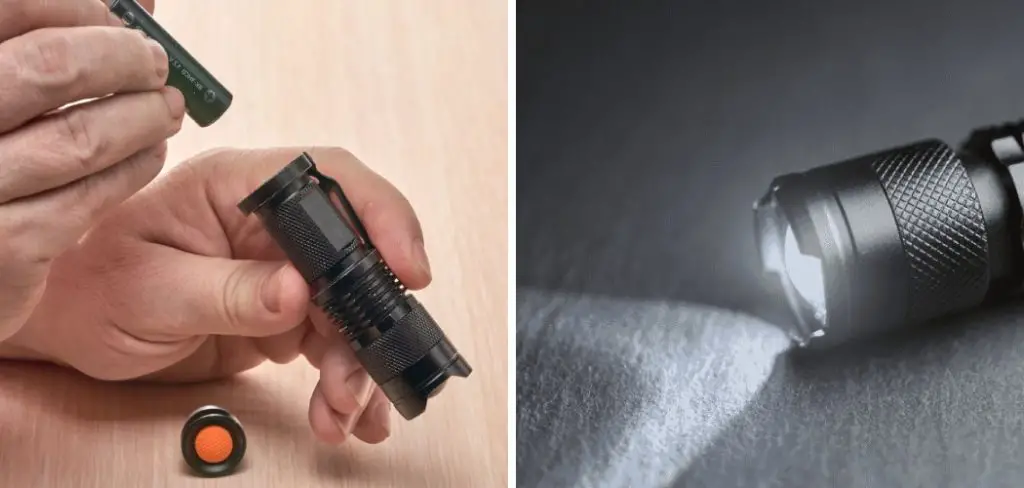
Have no fear! With our quick guide on how to fix a flickering flashlight, you’ll be prepared for whatever happens – from new batteries to cleaning out some wiring connections, we have all the tips and tricks for mastering any situation!
Why Do Flashlights Flicker?
Have you ever been in a dark room and noticed your flashlight flickering? It is not just a defect of bad quality, but rather a feature that helps the batteries last longer! Flashlights flicker because they usually run on electricity provided by batteries that send their power through filaments.
This process of powering filaments causes the electrical current to pulse, which leads to the flickering effect. Flickering also serves as an indicator that the battery is running low and needs to be changed or recharged soon. Therefore, seeing flickering with your flashlight is not a bad thing- it’s just your light’s way of alerting you before it runs out of juice.
How to Fix a Flickering Flashlight Problem [Step by Step]
1. Check and Tighten Bulb:
If you ever find yourself in the dark with a flickering flashlight, you may not have to replace the bulb! The most common reason for flashlight flicker is a loose bulb – so check and tighten it in its socket. Simply unscrew the lens from the light and squeeze your fingers around the base of the bulb as if you are hugging it.
Make sure it’s snugly fitted in place, then line up the grooves on either side, twist clockwise to secure, and replace the lens. Voila! You’ll be sure to see a steady beam of light again in no time.
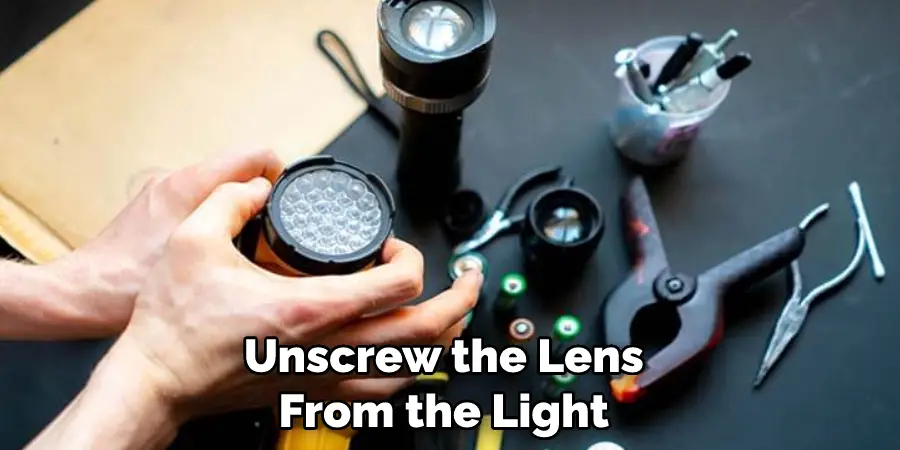
2. Check for Loose Wiring:
If you find yourself in need of a light but all your flashlights seem to be flickering, take a minute and check for loose wiring. Oftentimes, a simple tightening of the batteries or a connection will do the trick and have you seeing clearly in no time. TIP: To tighten batteries, ensure that the +/- count matches at both ends.
If it’s not lined up properly it could be the culprit. If tightening is still of no avail, closely inspect the connection points; corrosion or bent terminals are usually to blame if battery connections are not the root cause. With some simple maintenance techniques, you can get your flashlight back up and running!
3. Check for Worn-out Batteries:
A flickering flashlight can be an annoyance, but checking for a worn-out battery is an easy way to diagnose and fix the issue. Oftentimes, when a flashlight is flickering it’s a sign that the batteries need to be replaced. To determine if this is indeed the issue, open up the flashlight and check for any leaking residue or damage on the batteries.
If there is any indication of damage or leakage then these should be immediately replaced with fresh ones to restore power to the flashlight. Make sure that you use batteries of similar make and size as those listed by the manufacturer to get the most out of it. With a few easy steps, your flashlight will be in perfect working condition once again!
4. Check for Dirt-insulated Connection:
If you have a flickering flashlight that’s not working after new batteries are inserted, it could be caused by a dirt-insulated connection. To check for this, use compressed air to clean off the battery terminals and any dust particles you can see in the flashlight itself.
If the dust is built up around where the contacts meet and there seems to be insulation between them, carefully scrape it away with a small pointed instrument like a paperclip; this should allow the current to flow better. Once you’ve cleaned the contacts and verified that everything is connected properly, your flashlight should be good as new!
5. Check for Faulty Switch:
If you are having trouble with a flickering flashlight, it could be the result of a faulty switch. The switch may not be connecting or disconnecting completely and is thus interrupting the flow of electricity to the bulb. To fix this, you can check for any debris that has accumulated at the entry points of the switch.
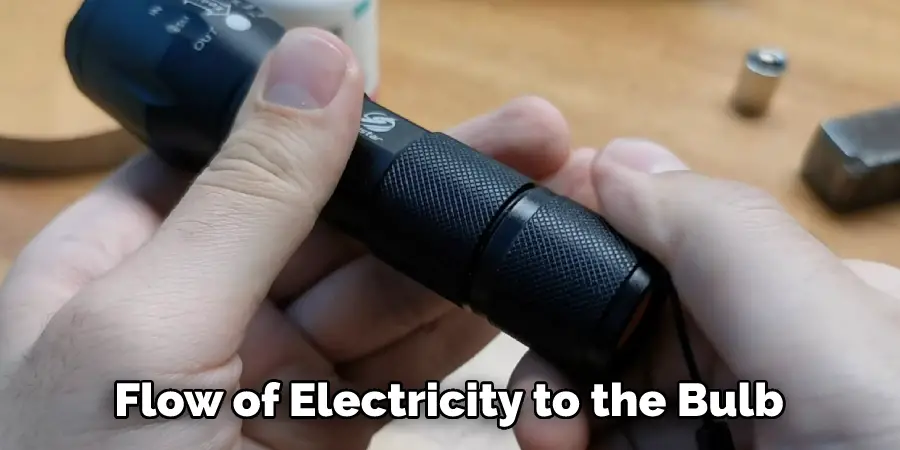
Removing any dirt or dust buildup should restore the normal functioning of the flashlight’s switch. If this doesn’t work, it is possible that the switch has malfunctioned entirely and needs to be replaced to get your flashlight back in working order.
6. Check for O-rings Number, Position, and Situation:
If your flashlight flickers and you’re determined to find a fix, then it’s important to first look into the o-rings – and not just how many there are. O-rings come in different sizes, so knowing their number is only part of the puzzle; the ring’s position and situation also play an important role in understanding why your flashlight is flickering. Checking these three things is a great starting point to get you on your way toward a fully functioning flashlight.
After these three steps, it’s time to move on to more complex solutions. With knowledge, diligence, and patience you can easily get your flashlight back up and running in no time without having to buy costly replacements or seek professional help.
Fixing Light Switches That Are Not Connected
Fixing light switches that are not connected can be a straightforward task for experienced home electricians, though it may not necessarily be so for novice DIYers.
Depending on the type of switch setup, you might need to unscrew the switch plate, disconnect any existing wires from the switch, and then connect new wires to establish a new connection. It is important to understand the type of wiring system presented in the wall before attempting repairs.
If all else fails, hiring a professional who knows what they’re doing could ensure safety and save time.
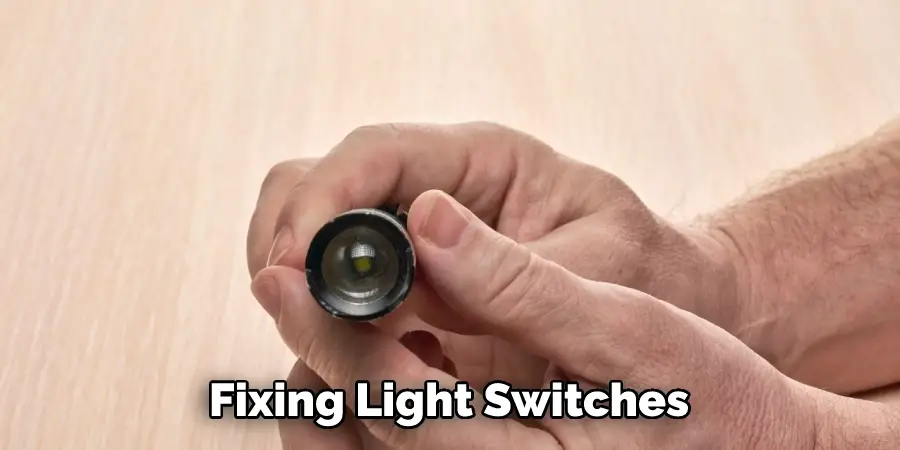
Frequently Asked Questions
Is There Anything Else That Could Be Wrong With My Flashlight Besides the Fact That It’s Flickering?
If your flashlight is flickering, it could be because something inside it is causing an imbalance. One potential cause could be that the battery itself has been damaged in some way, and may need to be replaced. Another possibility for why your flashlight may not be working properly might be that the filament in the bulb has burned out. If this is the case, it may not be able to create or maintain a strong electrical current.
Which can lead to flickering or dim light. If replacing the bulb doesn’t work and you have tried different batteries, then the issue may lie with the circuitry inside the flashlight case. No matter what the cause of your flickering flashlight may be, you must troubleshoot and identify its source to determine how best to repair it and get back on track.
What is the Difference Between an Incandescent Bulb and a Fluorescent Bulb?
Incandescent and fluorescent bulbs are both used widely for many different types of lighting situations. At first glance, the two seem very similar, but there is a key difference in the technology that they use to power the light. An incandescent bulb produces light by sending electricity through a thin wire filament which makes it extremely hot and emits light.
Fluorescent bulbs use electromagnetic radiation to convert into visible light. This process utilizes less energy, making them more energy-efficient than traditional incandescent bulbs. Beyond that, fluorescent bulbs also typically last longer since they don’t overheat like incandescent bulb filaments do, meaning fewer replacements over time.
Both types of bulbs have their pros and cons so it’s important to consider almost every factor when deciding which type best fits your lighting needs.
Can You Replace the Lightbulb in Your Flashlight With a Different Type of Bulb?
Flashlight bulbs come in a variety of types, such as halogen, incandescent, and LED bulbs. Halogen bulbs are bright and long-lasting but consume more battery power. Incandescent bulbs are inexpensive, but they tend to dim over time.
Finally, LED (Light Emitting Diode) Bulbs cost more initially but they last much longer than the other two varieties. When deciding whether to replace the existing light bulb in your flashlight with a different type, the cost is probably the main factor to consider.
Is it worth spending a little extra upfront for the long-term savings of a LEDbulb? Longer-lasting batteries may make this choice more attractive as well. Ultimately, you’ll have to balance these considerations when determining which bulb is best for your particular needs.
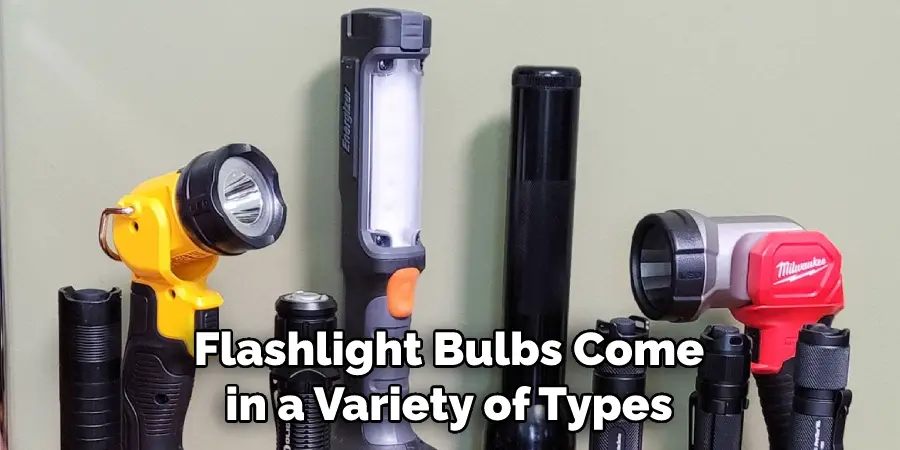
Does It Matter What Kind of Bulbs You Use in Your Flashlight?
Whether or not the type of bulb matters in your flashlight depends on what you plan to use it for. If a particular light is required for a specific task, then the bulb will matter a great deal and should be chosen carefully. On the other hand, if the goal is to have basic illumination so you can move around safely, traditional incandescent bulbs are usually sufficient.
There are advantages and disadvantages to different bulbs, so consider your needs before picking one out–halogen and LED bulbs last longer but cost more, while fluorescent bulbs offer lower energy consumption but may require additional energy conversion steps. In any case, always be sure to pick one that fits your flashlight properly!
Conclusion
If your flashlight starts flickering, it’s not the end of the world. With a few easy steps, you can get it back to working like new in no time. And if all else fails, you can always buy a new one.
You should carefully determine how to fix a flickering flashlight. If your flashlight is still not working after trying all of these tips, it may be time for a new one. Check out our website for a great selection of high-quality flashlights!
